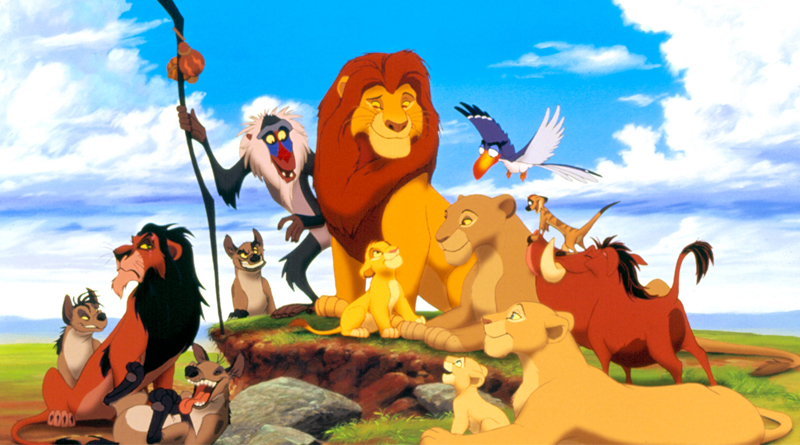Animation is Dominating the Box Office

ANIMATION FILMS ARE DOMINATING THE BOX OFFICE
By Arindam Bhunia
“Animation has now moved into adult acceptance rather than just being ‘for kids’ primarily because of the quality of the screenplays being developed and written.” – Michael Cowan, Stealth Media Group Technology in animated media has come a long way since the early days of hand-drawn cartoons. The rapid advancement of technology has made computer animation available to the masses and the animation industry has become one of the fastest growing industries. So, in the fourth edition of CULT CRITIC, we will look through how technology is driving the next wave of film animation. The techniques used by animators to bring characters to life have improved dramatically over the years, unlike traditional animation, which made its debut in 1906 and created the illusion of movement through frame-by-frame manipulation of drawings and illustrations. Today most animators use computers to generate three-dimensional images. Creativity and expansion of the target market are the major reasons for the massive registration of patents for animation. The U.S. leads the market for animation patents, due to the wide scope and demand for locally generated animation content, and the presence of top film industry players such as Disney and DreamWorks. The global animated film and gaming market is expected to grow from $122.20 billion in 2010 to $242.93 billion by 2016.
This represents a compound annual growth rate (CAGR) of 12.94% from 2011 to 2016. The U.S. is by far, the largest market for animation in the world. Between 2010 and 2016, feature animations did a yearly average of 173.9 million tickets, accounting for 14.2% of the total admissions in the country. The analysis of world markets other than the US & Canada, could not be conducted comprehensively. On the one hand, the limited information available on China does not allow for an analysis of the evolution in the country; on the other, the Indian and Japanese markets could not be analyzed at all due to a lack of data. Not surprisingly, the largest European markets were also the largest markets for animated movies in Europe, with Russia, the UK and France accounting for more than half of the yearly average admissions to animation in Europe between 2010 and 2016. However, when it comes to the market share of animation in each country, smaller territories such as the three Baltic states, Slovakia, and Slovenia stood out during the same period.
TOP 10 MARKETS BY ADMISSIONS: ANIMATED FILM ATTENDANCE
MARKET SHARE OF ANIMATION IN THE EU: European animated films achieved most of their admissions outside the national markets. Only 36.3% were generated in the main country of production, compared with 50% in the case of European productions of all genres. Part of the explanation is to be found in their performance in non-national European markets, accounting for 29% of the total admissions to European animation (only 23.7% if we look at films of all genres). However, it is in non-European territories where the difference becomes more evident, with 34.8% of the admissions to European animation generated there compared to only 26.3% of those to European films of all genres.
ADMISSION TO EUROPEAN ANIMATION FILMS BY TERRITORY OF RELEASE
Animated family films have performed consistently well at the box office, with Disney films enjoying lucrative re-releases before the home video era. Disney also enjoyed later success with its Pixar brand, of which the Toy Story films, the Finding Nemo films, and Inside Out have been the best performers; beyond Pixar animation, the Shrek, Ice Age, Madagascar and Despicable Me series have met with the most success. The Peter Pan, Jungle Book, Mickey Mouse, and Bambi series saw successful returns after lying dormant for decades.
DreamWorks Animation films have grossed the most, with over $13.8 billion across 33 films, while Illumination Entertainment films have the best average with $741.4 million per film across six films. John Lasseter's films have grossed the most of any animated director, with a total of $18 billion, while Chris Meledandri has the best average $605.6 million per film across 10 films as of February 2017.
TOP GROSSING MOVIES 1995-2015: ADJUSTED FOR INFLATION
The overall animated media and gaming market is segmented based on animated and gaming sub-segments. Animation includes e-Education, web designing, and animation entertainment. Furthermore, animation entertainment includes segments such as movies, Visual Effects (VFX), TV & Broadcast, and Direct-to-DVD. Movies are further divided into 2D animation and 3D animation. Gaming includes PC games, mobile games, console games, and online games. The global animation & gaming market is segmented into four geographies: North America, Europe, Asia-Pacific and Japan, and ROW (Rest of the world). North America forms the largest segment with about 42% of the overall share, followed by Europe; whereas APJ is the fastest-growing region with an expected CAGR of 19.08% from 2011 to 2016. And the future? Can technology keep up with an ever more demanding audience eager for ultra-realistic rendering of their on-screen entertainment? Well, despite the enormous differences from country to country, it can be said, as a general rule that the decrease of investment in animation by European broadcasters has forced producers to explore new sources of financing. Licensing and internet services have become more and more fundamental for the film industry.


